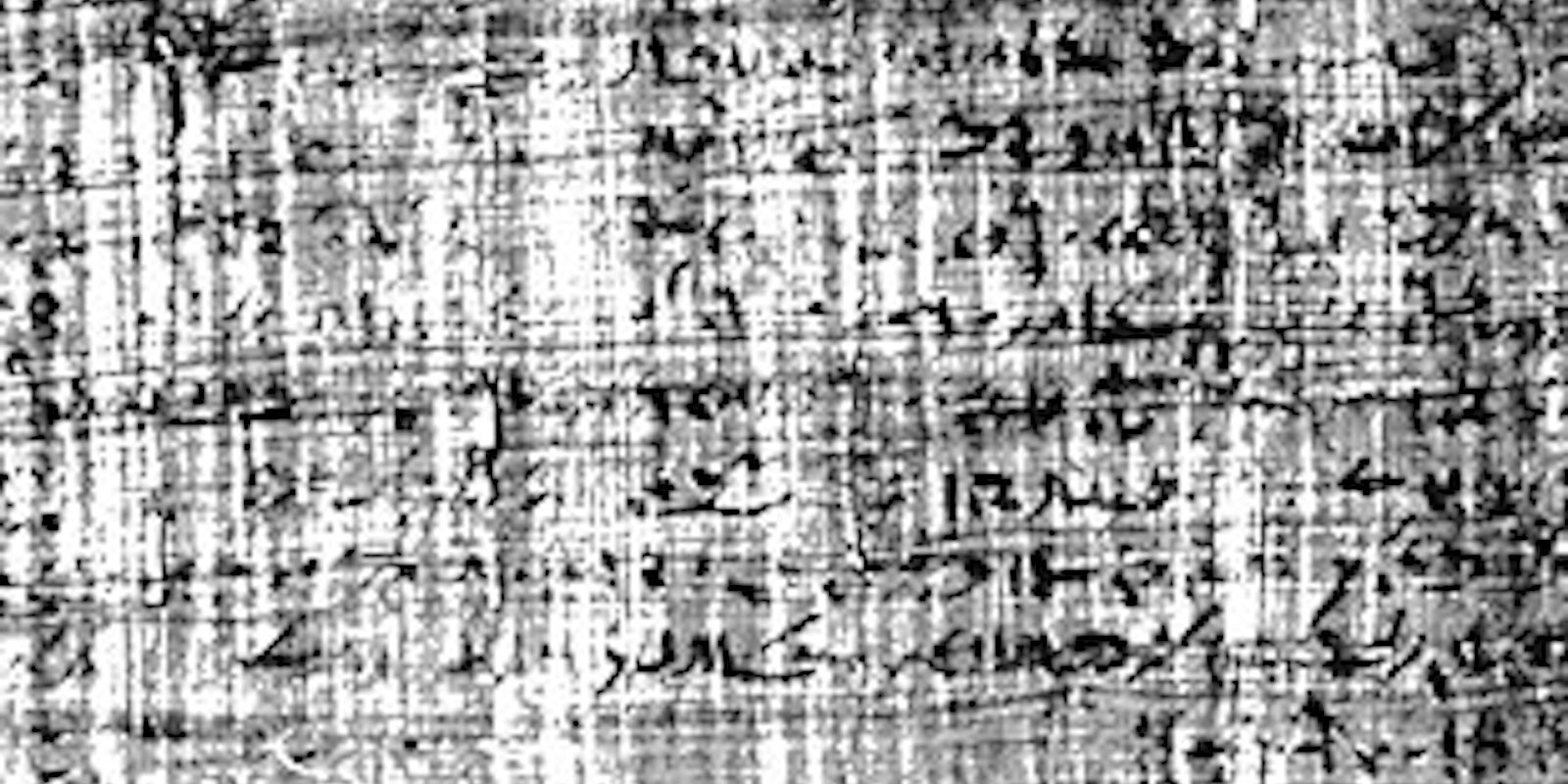Who takes 37 years to finish a website? Only a big concern, a government or university, would have the institutional fortitude to pursue such a project. And the University of Chicago is just such an institution. The school’s Oriental Institute has unveiled the Demotic Dictionary, a titanic undertaking with an online interface that provides a window onto the daily life of ancient Egypt.
Demotic is the script used in Egypt from the 7th century B.C.E. to the 5th century C.E. A script to carry the language of trade, administration and everyday life, it is separate from the formal hieroglyphic and a descendant of the earlier hieratic script.
The cool factor is pronounced. The “book” collects all the script found on potsherds, papyrus and statuary, along with definitions and explorations, text and context. Demotic, after all, is fairly well known to the general public, though rarely by name. It’s one of the languages on the Rosetta Stone, whose translation solved the mystery of hieroglyphics.
But the whyfor of the matter is not as easy to divine for the layperson, so the Daily Dot contacted Dr. Janet Johnson, head of the Demotic Dictionary project.
How do you expect scholars use the Demotic Dictionary?
They can download the PDF files (for free) and search them as they would any other dictionary. Eventually, revised PDFs (incorporating corrections of typos, additions of cross-references, additional material which has come up since the PDFs were posted) will be prepared, the current PDFs will be archived, the new ones posted (and/or made available by DVD), and a hard copy of the dictionary printed (mainly for use in libraries, I imagine) from the PDFs.
What precedent is there for the dictionary?
The Chicago Demotic Dictionary started out as a supplement to the Demotisches Glossar published by a Danish Demotist named Erichsen in 1954. Many publications of long, major texts include a glossary of all the words found in that text. Within the more general field of Egyptology (of which Demotic studies is a subfield), there are dictionaries of hieroglyphic and hieratic vocabulary, of vocabulary attested during different time periods (e.g., Old Kingdom, Ptolemaic period), and of the Coptic stage of the language. (Coptic is the latest stage of the ancient Egyptian language, used in the Egyptian Christian [Coptic] church and written using the Greek alphabet supplemented by 6 characters borrowed from Demotic for sounds which didn’t occur in Greek.)
What problem does it solve for scholars and students?
It provides a reliable resource for the spelling/orthography, basic and nuanced meanings of vocabulary, including examples of words used in common phrases or compounds (as in English and probably all languages, the meaning of a compound may differ slightly from the combined meanings of each of the words in the compound).
What other resources do they have for this area of study?
As noted, there are dictionaries of other stages of the Egyptian language, also. The Demotic dictionary provides cross-references to dictionaries of earlier and later stages of Egyptian; in addition it provides cross-references to Greek and Semitic dictionaries for words which seem to have been borrowed between languages.
Are there other dictionaries that are analogous to this one? Specifically in their being made available online?
Here at the Oriental Institute, the on-going Hittite Dictionary and the Chicago Assyrian Dictionary completed last year are both available online via scans of published hard copy volumes. The Hittite Dictionary also has developed an interactive version of the volume for the letter P. Within Demotic studies, there is also an on-line “Demotic Word-List” run by a German colleague; this is, as its name states, a word-list, not a dictionary.
Has your understanding of Egyptian life changed during this project?
My personal understanding has grown as I tried to understand passages in which unusual words were used but also with the analysis of the “extended meanings” of common words, giving us interesting insights into their understanding of connections between objects and concepts or between concepts.
Does an understanding of Demotic also help you look back into more distant Egyptian life?
There are some words which are more common in Demotic than in texts from earlier stages and so we may be able to identify a more nuanced understanding of the meaning/range of meanings of individual words. It’s a two-way street, though, with understanding of earlier words frequently being a key to understanding how they are used (whether identically or slightly differently) in Demotic.
How does Demotic relate to hieratic and how is our understanding of Demotic’s precursor?
Hieratic is a cursive script derived from hieroglyphs, which were basically limited in use to monumental inscriptions. Hieratic was used for “everyday” and personal writing. Demotic is a late, even more cursive, derivative from hieratic. In early Demotic, one can see clear connections to contemporary hieratic; however, Demotic and hieratic continued to develop in separate ways and the connections between later (Ptolemaic and Roman) Demotic to hieratic are less direct/clear. Demotic fairly quickly replaced hieratic for most “everyday” writing but religious texts continued to be written in hieratic even into the Roman period. Thus, there are texts of a religious nature for which we have both Demotic and hieratic versions of the text.
How does it feel to finish a project 37 years in the making? Relief, or does the project’s completion introduce a host of subsequent projects?
It’s great to be finishing, but we are looking forward: to turning the PDFs into a searchable database, to providing links to online Demotic resources, to making our resources available online, and to continuing with our lexicographic work (new texts are being published all the time) within the framework of the new database.
Photo via University of Chicago


